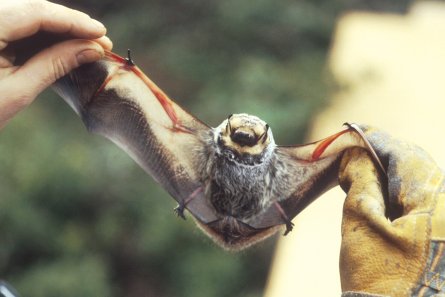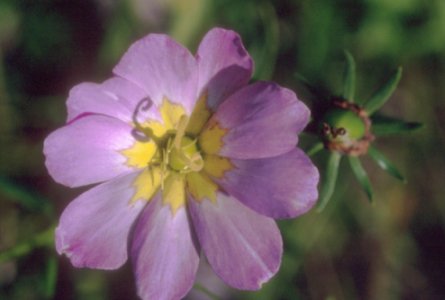
by: Tom Mason
JULY 2001
Date of Post: July 2003
Anyone who has walked along a country road at dusk in Nova Scotia has probably seen brown bats darting just above the ground in pursuit of insects. The tiny mammals are a common species in th province, hardly a candidate for endangered species status. But that could change in a flash. The brown bats in the province congregate in just three or four major hibernation sites each winter - caves and abandoned mines that represent some of the largest known hibernation sites for the species in eastern North America. A sudden epidemic, natural disaster or humanmade threat could have devastating effects on the population.

Hoary Bat
As more and more species in Nova Scotia come under threat, scientists have been racing the clock to understand their lives and find ways to protect them. Now through a landmark nationwide project called The General Status of Species in Canada, those efforts will become more systematic.

Piping Plover
The study looks at a number of categories of species across Canada to assess the strength of their populations and identify any factors that might threaten the health of populations. In addition to high-profile species like birds, mammals and freshwater fish, the project also examines a number that don't normally receive a lot of attention, including ferns, butterflies and Canada's 77 species of orchid.

Plymouth Gentian - One of Nova Scotia's most endangered plants
Each province and territory is collecting data on their own native species and adding it to the national list. In Nova Scotia, 748 species have already been studied, with another 1,600 expected to be added by the end of 2001. Of those, 3 per cent are believed to be at risk, and 8 per cent are highly sensitive to human activities.
Mark Elderkin is Species at Risk biologist for the Nova Scotia Department of Lands and Forestry. He heads the Nova Scotia portion of the study. He says the wild species study is vital because it will identify crucial gaps in species knowledge across the country. "It's giving us a snapshot of what's going on continentally with our native species. That's critical."
In Nova Scotia, the study has produced some predictable results and a few surprises. While the piping plover and the right whale have received a lot of attention in the past few years, some of the other critically endangered species are less well known. For example, three of the most at-risk species in Nova Scotia are reptiles - the northern ribbon snake, the Blandings turtle and the wood turtle. Other high risk species include a number of freshwater fishes, bog plants and freshwater mussels. In fact, freshwater mussels represent the most threatened group across Nova America, according to Elderkin, with half of all known species currently on the endangered list.
Some of these species are still poorly understood by scientists. The northern ribbon snake, for example, is believed to breed in large underground denning sites, but none of those sites has ever been discovered. And scientists still aren't sure how many species of butterfly are native to the province. But Elderkin feels the general status report will provide the catalyst for scientists and government agencies to learn more.
"Our ultimate goal is to establish an ongoing process that will be updated every five years," he says. "The end result is that it will raise the bar in terms of natural history expertise in the province."
The results of the study can be found at www.novascotia.ca/natr/wildlife/genstatus